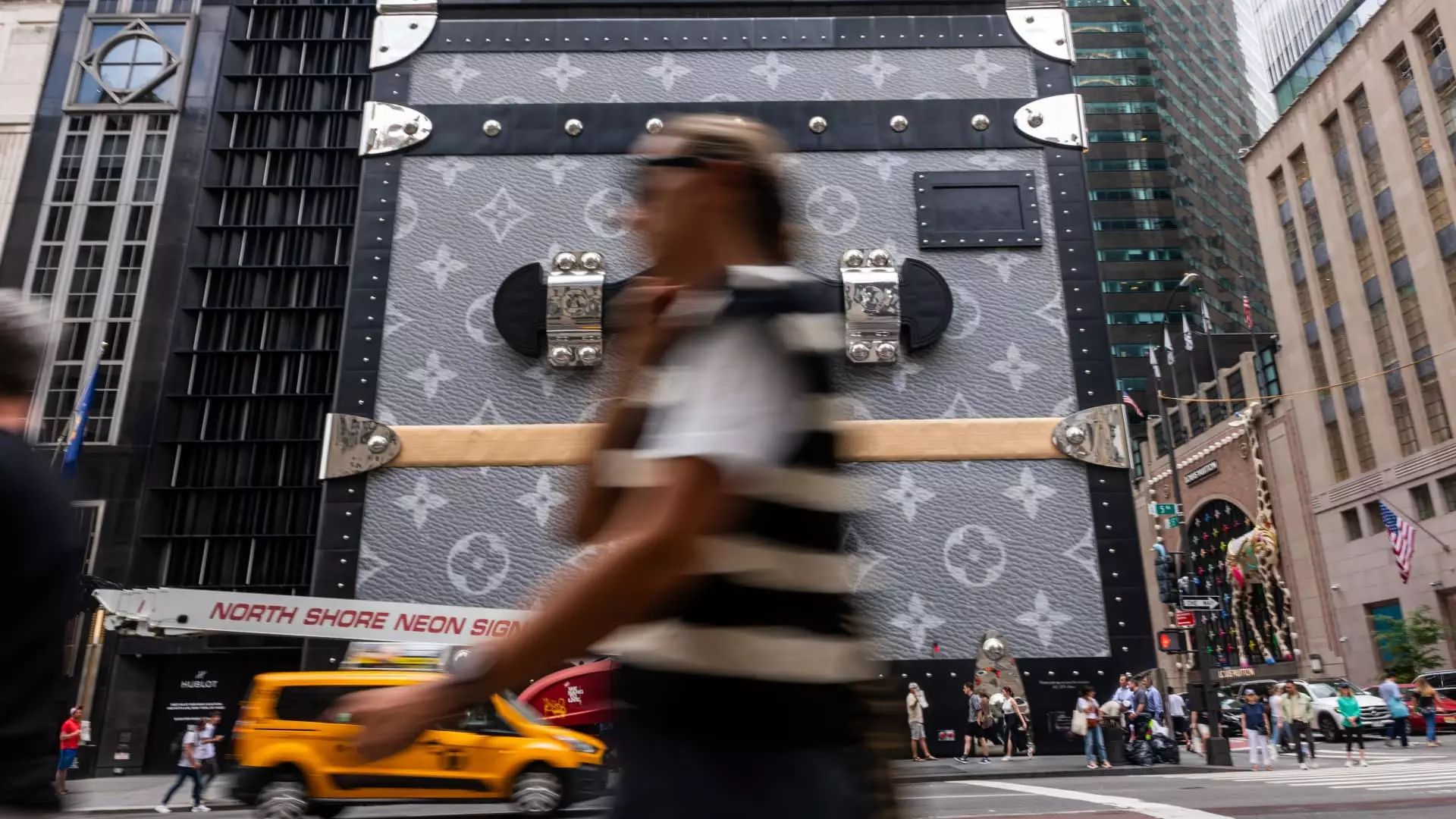Despite the palpable optimism surrounding the supposed resurgence of the luxury industry, beneath the surface lies a deeply fragile landscape marked by inconsistency and underlying vulnerabilities. Major players like LVMH have shown signs of resilience, yet their latest financial data reveals a modest decline, which many interpret with cautious optimism rather than genuine confidence. This faint glow of hope is more reflective of temporary reprieve than sustainable recovery, revealing the luxury market’s inherent volatility. The narrative of a bullish comeback often overshadows the persistent challenges—geopolitical shadows, currency fluctuations, and fluctuating tourism flows—that continue to threaten stability. Complacency fueled by short-lived positive indicators risks blinding investors and executives from deeper structural issues that need urgent addressing.
Currency Fluctuations and Market Rebalancing—A Shadow of Instability
The fluctuating value of foreign currencies, particularly the Japanese yen and the dollar, has become an unpredictable force shaping the industry’s fate. While a sharp yen decline once temporarily boosted tourism and luxury shopping in Japan, the recent rebound signifies a rebalancing phase—one that comes with its own set of complications. Luxury brands, heavily reliant on international tourists and cross-border spending, are now caught in a geopolitical tug-of-war; tariffs, exchange rate swings, and local economic conditions work in tandem to make forecasting a treacherous endeavor. The industry’s assumption that domestic markets will compensate for declining international footfall is overly optimistic, neglecting the disparities across regions and the fragile confidence of consumers. This rebalancing is likely to be a protracted process fraught with uncertainties that could easily derail any perceived progress.
U.S. Market: The Contradiction Between Promise and Precaution
The United States emerges as a double-edged sword for luxury brands. On one hand, increased sales figures suggest resilience; on the other, these gains are heavily scrutinized for whether they are driven by genuine demand or by preemptive shopping ahead of impending tariffs. This ambiguity exposes the industry’s overreliance on the American market as a safety net amid Chinese demand stagnation. While brands like Burberry and Richemont celebrate sales growth, the underlying motivations remain suspect. Are consumers purchasing with long-term loyalty, or are they simply exploiting current conditions for short-term gains? The cautious tone adopted by executives reflects a collective awareness that these gains may evaporate if economic pressures or tariffs intensify—highlighting the precariousness of the US as a stable growth engine.
Pricing Strategies and the Rising Cost of Luxury
The increasing cost structures threaten to undermine the very essence of luxury—its exclusivity and allure. Many brands have resorted to price hikes, attempting to offset mounting input costs and the fallout from inflation. Yet, this strategy risks alienating a segment of consumers who are increasingly sensitive to price and value, especially in a climate of economic uncertainty. While some, like Brunello Cucinelli and Moncler, are optimistic, asserting that modest increases remain manageable, the broader industry’s approach appears more reactive than strategic. LVMH’s mention of needing to bolster product quality alongside price increases underscores an understanding that superficial inflationary adjustments could be counterproductive if not paired with genuine innovation. The slowest rise in luxury prices since 2019 might signal a cautious pause—a recognition that pushing prices too hard could backfire if demand continues to soften.
The Shifting Nature of Luxury: Category and Consumer Dynamics
In the burgeoning chaos of wealth and taste, category preferences reveal as much about the industry’s future as macroeconomic trends. Jewelry, especially under Richemont’s umbrella, remains a stronghold, yet watches and fashion are faltering. The intrinsic appeal of leather goods—especially within Hermes—continues to outshine other categories, suggesting that tactile, craftsmanship-driven products maintain a resilient edge in a fickle market. This underscores a broader truth: luxury brands that focus on authentic storytelling, timeless appeal, and craftsmanship will thrive, while those relying solely on trend-driven or status-symbol products risk fading into obsolescence. The industry’s overemphasis on novelty—driven by creative directors like Gvasalia—could be a gamble that either revitalizes brands like Gucci or further dilutes their core identity. Authenticity, rather than fleeting innovations, seems to be the real currency in a market increasingly scrutinizing brands’ purpose and values.
The Outlook: A Precocious and Temperamental Road Ahead
Investors and industry insiders must approach the prevailing optimism with skepticism. The luxury sector’s recent upticks are akin to delicate dominos—easily toppled by economic shocks, geopolitical tensions, or further policy shifts. What is presented as a recovery narrative may instead be a temporary plateau before deeper troubles resurface. The industry’s challenges are compounded by a need to balance exclusivity with accessibility, innovation with tradition, and cost management with brand integrity. For a sector so dependent on perception—both of scarcity and desirability—the road to sustainable growth is anything but straightforward. It requires a critical reassessment of growth strategies, rooted in genuine consumer engagement and adaptable pricing models, rather than superficial metrics of quarterly success.
This industry, perched precariously on a digital, geopolitical, and economic precipice, demands vigilance. Only by acknowledging its fragility and refusing to accept surface-level optimism can luxury brands hope to navigate the turbulent waters ahead with authenticity and resilience.

